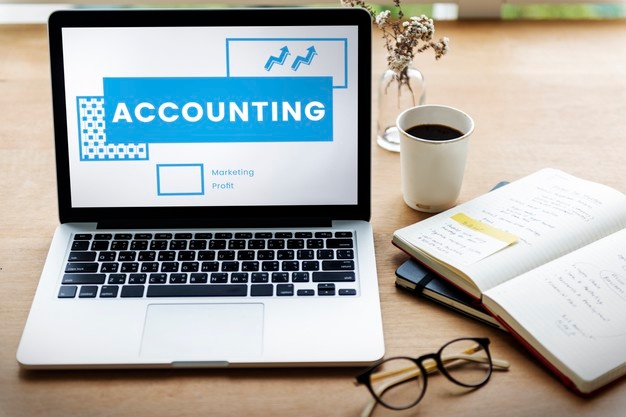Welcome back to our Weekly Digest. Read on for the latest updates and some ideas to help us all move forward.
We’re thinking of everyone affected by lockdowns around the country and encourage you to reach out if you have any questions about your business during this time. Read on for assistance that may be available to you.
Tougher COVID-19 Restrictions in Melbourne
New stricter COVID-19 restrictions came into effect in Melbourne at 11:59pm on Monday and will be in place until 2 September.
As part of the new restrictions, playgrounds, basketball courts, skate parks and outdoor exercise equipment will be closed and people will no longer be allowed to remove their masks to consume alcohol outdoors. Meanwhile, large construction projects will be restricted to 25%.
Curfew will also be in force from 9:00 p.m. to 5:00 a.m. each day.
Sydney Lockdown Fines Increased to $5,000
State police will fine people up to $5,000 if they are found breaching stay-at-home orders or lying to contract-tracing officials. It is also looks increasingly unlikely that Sydney will end its nine-week lockdown on 28 August as planned.
SA Blocks Travellers From Parts of NT, Greater Darwin Enters Snap 3-day Lockdown
South Australia closed its border to travellers from several local government areas north of the Central Desert and Barkly LGAs — excluding the East Arnhem LGA — in the Northern Territory as of 6:00 p.m. Monday night.
Only returning South Australian residents, essential travellers, those who are relocating, and people escaping domestic violence will be allowed to enter SA from the affected LGAs. Meanwhile, Greater Darwin and Katherine entered a three-day lockdown at noon on Monday after one positive case of COVID-19 was recorded.
Victorian Business Costs Assistance Program Round 2 July Extension
The Victorian Government’s Business Costs Assistance Program Round Two July Extension (BCAP2e) gives eligible businesses that had not previously applied for the Program in June, or have since become eligible, with the opportunity to apply for the equivalent of the July Top-Up Payments.
The program offers grants of $4800 to eligible businesses, including employing and non-employing businesses, depending on their industry sector.
Read the eligibility criteria here.
All hotspots: COVID-19 Disaster Payment for recognised lockdowns
This Federal Government support is lump sum payment for workers who cannot earn income because of a state public health order. You can check your eligibility here.
NSW Grants
The NSW Government will be offering financial support to businesses or not-for-profit organisations impacted by the recent COVID-19 restrictions and stay-at-home orders.
NSW: Micro-business grant
The micro-business grant is a $1500 fortnightly payment for businesses with a turnover between $30,000 and $75,000.
To check your eligibility and apply, visit the Service NSW website.
COVID-19 Business Grant
A one-off payment to help businesses, sole traders or not-for-profit organisations impacted by the current Greater Sydney COVID-19 restrictions.
Grants between $7,500 and $15,000 are available to eligible businesses depending on the decline in turnover experienced during the restrictions. For eligibility criteria and to apply, visit the Service NSW website.
JobSaver payment
JobSaver is a fortnightly payment to help maintain employee headcount (as at 13 July) and provide cashflow support to businesses. To check your eligibility and apply, visit the Service NSW website.
Small business fees and charges rebate
If you are a sole trader, the owner of a small business or a not-for-profit organisation in NSW, you may be eligible for a small business fees and charges rebate of $1500 aimed at helping businesses recover from the impacts of COVID-19. Applications are open and you can check your eligibility here.
You can view more NSW Government COVID-19 Support Packages here, including Jobs Plus, Sydney CBD Friday vouchers, Payroll tax support and support for the tourism industry. Get in touch with us if you have any questions.
QLD COVID-19 Business Support Grant
Your business may be eligible for financial support through the 2021 COVID-19 Business Support Grants. $5,000 grants will be made available to small and medium businesses across Queensland affected by COVID-19 lockdowns and lockdowns in other states. You must have experienced a 30% reduction in turnover as a result of the lockdown.
Applications will open in mid-August so we will keep you updated.
The Business Queensland website has an overview of the range of assistance available.
Fuel Tax Credit Rate Hike
Fuel tax credit rates increased on 2 August 2021 in line with fuel excise indexation. If you claim less than $10,000 in fuel tax credits per year, you can use simplified methods including:
- the rate that applies at the end of your BAS period
- the Basic method for heavy vehicles to calculate your claims if you use a heavy vehicle.
You can find the updated rates here and use this fuel tax credit calculator to work out your claims. If you need more help with your tax, contact our tax agents today!
Government Support for Best Emerging Innovators in Western Australia
A total of 21 start-ups and SMEs have been awarded up to $20,000 each by the Government of Western Australia. A total of $385,000 has been given through the Innovation Vouchers Program, which aims to assist Western Australian innovators in commercialising their ideas and creating new jobs.
Since its launch in 2011, the Innovation Vouchers Program has awarded 199 vouchers worth approximately $3.7 million.
Downsizer Contribution Into Superannuation
If you’re at least 65 years old and you meet the eligibility requirements, you may be able to make a downsizer contribution into your superannuation of up to $300,000 from the proceeds of selling your home.
Your downsizer contribution will not affect your total superannuation balance until your total super balance is re-calculated to include all your contributions, including your downsizer contributions at the end of the financial year.
It will count towards your transfer balance cap which applies when you move your super savings into the retirement phase. You can also access the downsizer scheme only once, and if you sell your home and choose to make a downsizer contribution, you will not be required to purchase another home.
Get in touch with us to check your eligibility and if you have any questions.
ATO support for those affected by COVID-19 restrictions or disasters
The ATO has a range of support options to help those affected by disasters or those experiencing challenges due to continuing COVID-19 restrictions.
The ATO may be able to:
- prioritise any refunds owed to you
- set up a payment plan tailored to your individual situation
- remit penalties or interest charged during the time you have been affected.
If you need help to manage your tax or superannuation obligations, please get in touch with us.
JobMaker Hiring Credit’s Second Claim Period
The second claim period of the JobMaker Hiring Credit is now open. So if you’ve taken on additional young employees between 7 January and 6 April 2021, you may claim the following payments:
- up to $10,400 over a year for each additional eligible employee aged 16 to 29 years
- up to $5,200 over a year for each additional eligible employee aged 30 to 35 years
Register any time until the scheme ends.
Wage Subsidy Scheme for Apprentices and Trainees
The government has announced the expansion of the wage subsidy scheme for apprentices and trainees. Under the scheme, the government will pay half the wages of apprentices up to a maximum of $7,000 each quarter for 12 months. Ask us if you have any questions.
4 Ways Your Business Can Increase Its ROI in 2022
Finding ways to boost your business’ profit margins can be challenging, especially if you’ve already tried many of the traditional ways of improving the stability of your cash flow during the pandemic. This Forbes article shared some unusual methods to grow your ROI.
- Invest in high-performing marketing platforms. Look into platforms that are not as saturated as Facebook, including Youtube and Instagram. You could also switch gears by starting a company podcast.
- Automate more tasks. Automate more tasks with the assistance of AI-driven tech and integrations to free up your team’s time and allow them to focus on getting higher level work done.
- Unclog your sales pipeline. Sit down with your sales team and outline your customer journeys. Remove stumbling blocks and friction points to improve your sales pipeline and speed up your sales cycle.
- Reorganise your team. Switching responsibilities between team members could improve your efficiency and may allow you to keep the same amount of core staff while scaling your business.
Do you need expert advice on your specific situation? Get in touch with us today and let’s work out a plan!
Get in touch
Contact us if you have any questions or want to discuss the next steps for your business.























